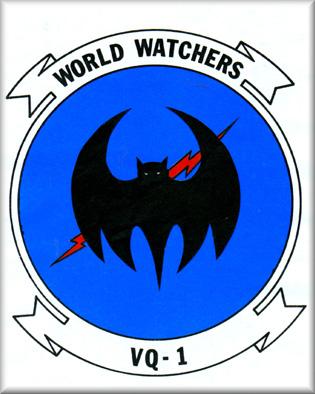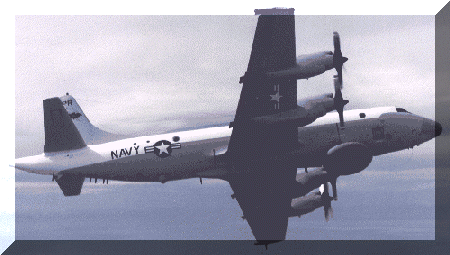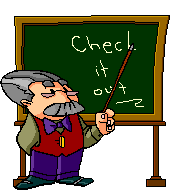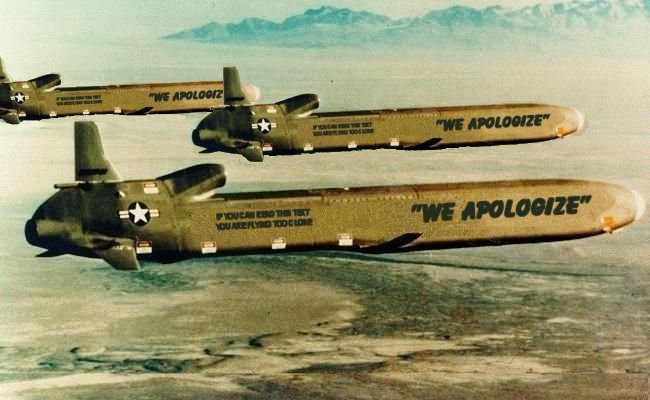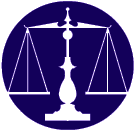Since the mid-air
collision on April 1, 2001 between a U.S. Navy EP-3
surveillance aircraft and a Chinese jet fighter, I had watched the
news with mild interest. This was mostly due to the proximity of
Guam to China.
I never dreamed that I
would play a role in this intensely watched Int'l l drama.
Somewhere in the negotiations between the United States & the
Chinese Governments, it was decided that a civilian aircraft
should be sent to retrieve the 24 crew members being detained on
Hainan Island, China. A call was made to Continental
Airlines headquarters in Houston, Texas. Continental was
chosen because of its Guam base & its ability to launch this
kind of operation at a moment s notice. From there, the operation
took shape through the tireless efforts of many people working
behind the scenes in a coordinated effort between the airline, the
military, and the State Dept. On Sat., April 7, 2001, I received a
call at home from Captain Ralph Freeman, Continental Micronesia
Director of Flight Operations. Ralph told me that the military
wanted to charter one of our jets to conduct a rescue mission and
asked if I would be one of the crew members. I said yes without
hesitation. Later we were told that we would need to get passport
pictures taken in case the Chinese Government required visas. We
got the required photos & were under the impression that we
would leave immediately. However, the negotiations slowed over the
demand from the Chinese that the U.S. issue an apology that the
U.S. was unwilling to give. Meanwhile, the Continental crew
remained on call 24 hours a day. Our Uniforms were laid out and
our bags were packed & waiting by the door.
On Wed. evening April 11,
2001, at about 630 PM Ralph called again to say that the parties
were very close to an agreement to release the U.S. crew & to
come to the airport. Upon arrival, we were given a briefing sheet
listing the information that we would need to conduct the flight.
We would carry a Repatriation Team consisting of Navy, Marine
Corps, and Air Force specialists, 14 people in all. Doctors,
Psychologists, & communications people with lots of gear
showed up on the ramp near the airplane, ready to board. They were
all dressed in casual civilian clothes. The 155 seat jet was
fitted with 2 full stretcher kits bolted in over rows of seats
complete with Oxygen tanks and I.V. bottles. They did not know the
condition of the 24 detained crew members and they were not going
to take any chances. They were prepared. When our crew was fully
assembled, it consisted of 11 people: 2 pilots to fly the jet and
an extra to provide relief because of the extensive flight time
involved. They were Captain
Tom Pinardo, Captain Pierre Frenay &
me, Captain
Guy Greider. We
also carried 5 very experienced Flight Attendants. They were
Debbie Percell, Susanne Hendricks, Jean Tang, Cynthia Iverson,
& Beverly Haines. Our 2 onboard mechanics were Peter Lum and
Julius Aguilo. Our load planner was Mike Torres. At about 930 PM
we received a call asking that we arrive in China no earlier than
600 AM, just about sunrise. It was obvious that the entire
exchange would be photographed and they wanted daylight
conditions. We estimated that a 215 AM departure from Guam would
put us on the ground in Haikou precisely at 600 AM local China
time. (2 hours earlier than Guam) Some of us just stayed on the
plane, others accepted the company s invitation to come to the
Continental President's Club, a local VIP lounge at the airport to
try to get some rest. It was difficult to get any rest with our
much anticipated mission so near. By 100 AM the pilots were back
in the briefing room going over the weather, flight plan, fuel
requirements and everything else that goes into a flight.
We loaded up the airplane
& finally departed Guam Int'l at precisely 215 AM. The
stretcher kits & medical gear were not the only special
additions to the airplane. The company had loaded a special file
into the navigation database of the flight management computer
(FMC). This allowed us to gain access to navigation data needed to
operate in this part of China, which is not in our normal route
structure. The Repatriation Team carried sophisticated equipment
to communicate with the military and government officials that
would monitor our progress throughout the flight. The route of
flight took us straight west from Guam toward the Philippines
along the G467 airway.
About half way across we
turned N. directly toward Hong Kong. This routing was designed to
avoid flying through Taiwanese airspace, something that the
Chinese could consider offensive. Approaching the Chinese
coastline, we contacted Hong Kong radar control. After
establishing radar contact with us, the controller gave us a short
cut to expedite his traffic flow. This was bad because it cut off
considerable distance & would result in arriving too early. We
compensated by slowing our airspeed until the computer again
estimated a 600 AM arrival. The instant we turned across the short
cut, the interphone rang from the back of the plane. They wanted
to know why we had deviated from the flight plan. We told them it
was due to Hong Kong traffic and that we had adjusted our
airspeed. We were still on schedule. Now we were approaching our
destination, Haikou airport on Hainan Island.
Captain Pierre
Frenay was at the
controls. The weather was 2000 ft overcast with 5 miles visibility
and light winds out of the east. Pierre made an ILS approach to
and landed on runway 9. Haikou airport is much the same as many
other airports in the world that serve jet transport aircraft. It
has an 11,000 ft runway with standard lighting and navigational
facilities. We touched down at 607 AM. The first early morning
light was beginning to illuminate the sky. The local air traffic
controller instructed us to follow a vehicle that was beside us on
an adjacent taxiway. He led us to a remote part of the airport,
away from the main terminal buildings. Once we had parked &
shut down the engines, we saw many uniformed Chinese military
personnel and vehicles. They did not appear to have weapons.
Portable stairs were
brought up to the airplane and we opened the main cabin door. The
Repatriation Team that we carried had been briefed to close down
all of their communications equipment prior to landing and put it
away. They were also briefed to remain in their seats in a
non-threatening posture in case the Chinese military came aboard.
The 1st & only person to come aboard was an Air China
employee. He spoke English & was to act as the translator
between our group and the Chinese military. He instructed us to
have everyone fill out both arrival and departure documents. He
collected all of our passports and left the aircraft. Before he
left, he said that only one person at a time would be allowed to
deplane. Peter Lum, one of our mechanics went down to supervise
the re-fueling and servicing of the airplane.
When that was complete, I
went down to do the walk-around inspection. I did this rather
slowly because I wanted to have a chance to look around. While I
was out on the ramp, a skirmish developed between people who were
trying to climb a wall to photograph our aircraft and the Chinese
police. Somehow, CNN managed to carry our arrival & departure
live. Once the airplane was serviced and ready to go, we looked
anxiously around for any sign of the buses that carried our 24
detainees. Before that could happen however, we had a problem to
deal with. A U.S. military General who was on the scene to assist
in the transfer came storming up the stairs and demanded to speak
with the Captain. Tom Pinardo responded. The General said that the
entire mission was now in jeopardy. A document called the general
declaration, which is standard on all Int'l flights had listed the
destination as Haikou, China R.O.C. The initials ROC stand for
Republic of China which is .. Taiwan! The Chinese were very upset
over this. Tom quickly crossed out ROC and replaced it with
P.R.O.C. the Peoples Republic of China. This seemed to satisfy
them.
With the airplane ready to
go and the paperwork complete, 2 buses pulled up and the 24 U.S.
service men and women saluted as they bolted up the stairs &
settled into the back of the plane. When the last one was aboard,
our passports were returned to us. The stairs were withdrawn, the
cabin door closed, and we started the engines & departed. It
was my turn at the controls. Once airborne heading straight south
we broke through the clouds into the bright sunshine.
Pierre made a
PA announcement that we were over Int'l waters &leaving
Chinese airspace. A great cheer rose from the back of the
airplane.
A short while later we
received a telephone patch over the HF radio from Mr. Joseph
Prueher, U.S Ambassador to China. He wanted to speak with
Lt. Shane
Osborne the 26 year old EP-3 Aircraft
Commander.
Lt.
Osborne came to the
cockpit and put on a headset. The Ambassador told him that on
behalf of the President of the United States & the entire
country he wanted to say welcome home . He went on to say how
proud he was of everything the crew had done from their airmanship
in saving the lives of the crew & aircraft, to their conduct
on the ground once they had been detained. They had truly done an
excellent job.
After his conversation
with the Ambassador, Lt.
Osborne stayed
in the cockpit for quite a while and told us his story pilot to
pilot of what had happened during and immediately after the
mid-air collision with the F-8 Chinese fighter.
The fighter came up
under their left wing. This pilot made 2 very close passes
previously that day. He apparently misjudged the intercept and his
vertical stabilizer struck the outboard left propeller on the
EP-3. The U.S. plane was in straight and level flight on autopilot
at the time. The fighter broke into two pieces and plunged into
the sea. The U.S. plane rolled to the left almost inverted, the
pilot lost control and they began to lose altitude. The Chinese
fighter had raked back across the fuselage & knocked off the
nose cone causing the aircraft to buffet wildly. When the nose
cone departed the aircraft it collided with and damaged the number
4 propeller on the right wing. The collision punctured the
pressure vessel and the EP-3 depressurized. The collision also
knocked off the pitot tubes eliminating airspeed and altitude
indications in the cockpit. It also knocked off the forward
bracket for the HF radio antenna. The antenna then flew back
&wrapped around the tail. "We
were almost upside down & totally out of
control,"
Osborne
told us. The dive continued & some crew members donned
parachutes. At about 8,000 feet, Osborne regained straight and
level flight. They considered ditching the aircraft in the South
China Sea but dismissed that option because it was certain to
result in loss of life.
They headed for the
nearest land, Hainan Island. The U.S. crew now faced the most
difficult landing of their lives. They made numerous mayday,
mayday, mayday radio calls on internationally recognized emergency
frequencies. The Chinese did not respond. Somehow, they managed to
get the airplane on the ground. Their next immediate task was to
destroy the sensitive electronic surveillance equipment aboard the
EP-3. Meanwhile the Chinese military had approached the aircraft
in vehicles and were yellingat them through loudspeakers to
deplane. The next 11 days would be a very uncertain time for them.
When we met them, they told
us that they had not been abused or mistreated. Their food was
adequate and plentiful. Sort of like eating in a Chinese
restaurant every day one of them said. On the 4th day, they got
some coffee. On the 5th day, some cokes were provided. The crew
did not know what kind of transport would be provided for their
return home. They were pleased and surprised to see a chartered
airliner from the United States.
The rest of the flight from
Haikou to Anderson AFB on Guam was uneventful. During the 5 hour
flight the crew was treated to the movie -- Men
of Honor &
enjoyed a 1st class meal. We did not know it at the time but our
landing at Anderson AFB was carried live on national television.
We taxied to the parking ramp at Anderson where many people had
turned out to welcome all of us home. Individuals &families
with kids, both military & civilian waved American flags &
cheered, showing support for the returning U.S. spy plane crew.
Once the 24 U.S.
crewmembers & the military Repatriation Team had deplaned at
Anderson, they immediately boarded waiting buses & were
whisked away. The Continental crew then became the object of
intense media attention. CNN, MSNBC, ABC, NBC, Reuters and various
print media interviewed us. A dizzying swirl of attention after a
very long day. We were happy, tired, & pleased that the
mission was so successful as Tom flew the last segment, a
10-minute flight back to Guam Int'l Airport. This time our
passengers included Bill Meehan, President of Continental
Micronesia, Guam Governor Carl Gutierrez, Lieutenant Governor
Bordallo & others.
We thought the day was just
about over but we had one more surprise in store. After landing,
we were given a hero s welcome of our own. The airport fire
department was in place to give us the traditional water cannon
salute, a rainbow arch of water for us to taxi under. A reception
was held at the gate with food, balloons, commemorative plaques,
and more media interviews with the local television station. This
was very heady stuff.
As I look back on this one
of a kind operation. It could not have happened without the
tremendous effort and skills of many people working behind the
scenes. Bill Meehan, Mitch Dubner at the SOCC in Houston, Tom
Rinow at the CMI SOCC, Captain Ralph Freeman, CMI Director of
Flight Operations & many others had major rolls in
coordinating this flight. It was accomplished through teamwork.
The fact that it came off without a hitch is testimony to how well
all these people did their jobs.
Captain Guy
Greider,
Continental
Airlines


